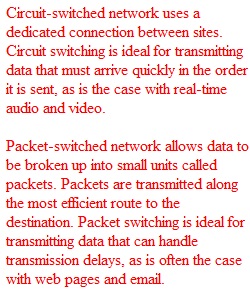


Q Please complete the following Critical Thinking Case Projects that align with this week’s TestOut.com Network Pro learning modules. Record your answers in a Word Document and submit it. 1. What is the difference between a packet-switched network and a circuit-switched network? 2. What are the two parts of a CSU/DSU? Which functions does each perform? 3. Which WAN technology uses fixed-length cells? 4. In which layer of the OSI model does PPP function? 5. What is multiplexing? How does it increase the bandwidth of a connection? 6. What are the disadvantages of a satellite internet connection? 7. What is the difference between authentication and authorization? 8. Which command shows you summary information about the interface status? 9. What does it mean if the interface status is administratively down/down? 10. Why is it important to conduct a needs assessment? 11. In the IT asset lifecycle, in which phase do you apply updates and patches? 12. What information is needed to create a network diagram? PreviousNext
View Related Questions